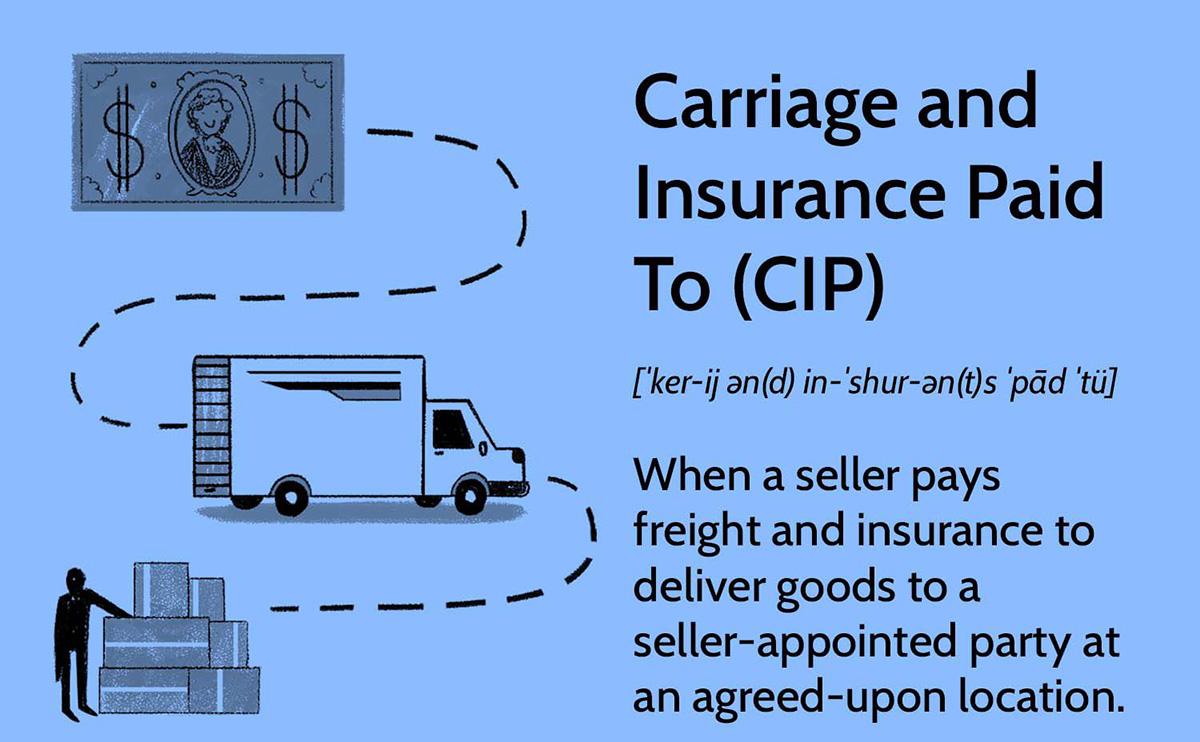

Finance
What Does CIP Mean In Accounting
Published: October 8, 2023
Discover the meaning of CIP in accounting and how it relates to finance. Expand your financial knowledge with this comprehensive guide.
(Many of the links in this article redirect to a specific reviewed product. Your purchase of these products through affiliate links helps to generate commission for LiveWell, at no extra cost. Learn more)
Table of Contents
Introduction
Welcome to our comprehensive guide on understanding what CIP means in accounting. In the world of finance and accounting, numerous acronyms are used to describe various concepts and processes. CIP, which stands for Capitalized in Progress, is one such term that plays a crucial role in financial reporting. Whether you are a student, a business owner, or a finance professional, understanding the meaning and implications of CIP is essential.
In this article, we will provide a clear definition of CIP in accounting, explore its purpose, discuss the accounting treatment for CIP, and provide examples to illustrate its application. Additionally, we will delve into the advantages and disadvantages of capitalizing assets in progress. By the end of this guide, you will have a solid understanding of CIP and its significance in financial reporting.
Before we dive into the details, it’s important to note that accounting terminology can sometimes be complex and confusing. We aim to simplify the concept of CIP and present it in a user-friendly manner, providing practical examples and real-world scenarios to better illustrate its application.
So, if you’re ready to demystify the concept of CIP in accounting, let’s get started!
Definition of CIP in Accounting
In the world of accounting, CIP stands for Capitalized in Progress. It refers to the accounting treatment of categorizing and tracking assets and expenses that are still in the process of being completed or constructed. CIP provides a mechanism for businesses to accurately record and allocate the costs associated with long-term projects.
When a company undertakes a significant project, such as building a new factory or developing a new product, the costs incurred during the construction or development phase are not immediately expensed on the income statement. Instead, they are recorded as CIP on the balance sheet.
CIP represents the portion of a project’s costs that is still in progress and has not yet been completed or put into service. It includes direct costs, such as materials and labor, as well as indirect costs, such as permits, licenses, and supervision fees. By capitalizing these costs in progress, companies can more accurately reflect the value of the project and its impact on the financial statements.
It’s important to note that once a project is completed or put into service, the costs recorded under CIP are transferred to a specific asset account, such as Property, Plant, and Equipment or Inventory. This transfer is typically done through journal entries and reflects the conversion of the CIP into a tangible asset that can be depreciated or sold.
Overall, the concept of CIP in accounting allows businesses to effectively track and allocate the costs associated with long-term projects, providing a clearer picture of the company’s financial position and performance.
Purpose of Capitalized in Progress (CIP)
The purpose of capitalizing assets in progress, commonly referred to as CIP, is to accurately reflect the costs and value of long-term projects in the financial statements. By categorizing and tracking these costs separately, businesses can better assess the financial impact of ongoing projects and make informed decisions.
One of the key purposes of CIP is to provide transparency in financial reporting. By capitalizing costs that are still in progress, businesses can avoid misrepresenting their financial statements by inflating expenses or understating the value of their projects. CIP allows for a more accurate portrayal of a company’s financial position and performance, providing stakeholders with the necessary information to make sound judgments.
Another purpose of CIP is to align with the matching principle in accounting. The matching principle states that expenses should be recognized in the same period as the revenues they generate. By capitalizing costs in progress, companies can match the expenses associated with a project with the revenues it is expected to generate once completed. This ensures that the financial statements reflect the economic reality of the project and prevent distortion in profitability measurements.
Capitalizing assets in progress also helps in assessing the financial feasibility of a project. By tracking and categorizing the costs incurred during the construction or development phase, businesses can determine if the project is economically viable and if the expected benefits outweigh the costs. This information is crucial for management to make informed decisions about resource allocation and project continuation.
Additionally, CIP plays a role in tax planning and compliance. Some countries or tax jurisdictions may allow businesses to claim tax deductions or benefits related to the costs incurred during the construction or development phase. By capitalizing these costs, companies can more accurately calculate and support their tax deductions, ensuring compliance with applicable tax laws.
In summary, the purpose of capitalizing assets in progress (CIP) is to ensure accurate financial reporting, adhere to the matching principle, assess project feasibility, and facilitate tax planning and compliance. By capitalizing costs that are still in progress, businesses can provide stakeholders with a more transparent and reliable view of their financial position and performance.
CIP Accounting Treatment
The accounting treatment of capitalizing assets in progress (CIP) involves recording the costs associated with long-term projects on the balance sheet, rather than immediately expensing them on the income statement. This treatment allows businesses to accurately track the costs of ongoing projects and reflect their value in the financial statements.
When costs are incurred during the construction or development phase of a project, they are initially recorded as CIP on the balance sheet. These costs include direct expenses, such as materials, labor, and equipment, as well as indirect costs, such as permits, licenses, and supervision fees. By capitalizing these costs, companies can accurately reflect the value of the project and its impact on the financial position.
The process of capitalizing costs in progress involves the following steps:
- Identification of applicable costs: Businesses need to identify and gather all relevant costs incurred during the construction or development phase. This includes both direct and indirect costs.
- Classification as CIP: The identified costs are then classified as CIP and recorded on the balance sheet under a specific account, typically titled “Capitalized in Progress” or a similar name.
- Tracking and monitoring: It is crucial for businesses to track and monitor the costs recorded as CIP throughout the project’s duration. This involves regular updates and adjustments to reflect any changes in the project’s scope or estimated costs.
- Transfer to specific asset accounts: Once the project is completed or put into service, the costs recorded as CIP are transferred to specific asset accounts. For example, if the project involves constructing a building, the costs will be transferred to the “Property, Plant, and Equipment” account.
- Depreciation or amortization: Once the costs are transferred to asset accounts, they are subject to depreciation or amortization over their useful lives. This allows for the gradual recognition of the costs over time and aligns with the matching principle in accounting.
The accounting treatment of CIP requires careful attention to detail and adherence to accounting standards and principles. It is crucial for businesses to accurately track and record these costs to avoid misrepresenting their financial statements and to provide stakeholders with reliable information regarding ongoing projects.
Examples of CIP in Accounting
To better understand the concept of capitalized assets in progress (CIP) in accounting, let’s explore a few examples that demonstrate its application in real-world scenarios:
Example 1: Construction of a Commercial Building
Imagine a real estate development company embarking on a project to construct a commercial building. During the construction phase, the company incurs various costs, including materials, labor, permits, and architectural fees. Instead of expensing these costs immediately, they are recorded as CIP on the balance sheet.
As the construction progresses, the company continues to accumulate costs and updates the CIP account accordingly. Once the building is completed and put into service, the costs recorded as CIP are transferred to the “Property, Plant, and Equipment” account. From that point forward, the building will be subject to depreciation over its useful life.
Example 2: Development of a Software Application
A software development company is creating a new application to be launched in the market. The development process involves coding, testing, and refining the software. The company incurs costs for salaries of programmers, software licenses, development tools, and other expenses related to the project.
Instead of immediately expensing these costs, they are recorded as CIP on the balance sheet. As the software development progresses, the company continues to accumulate costs and updates the CIP account accordingly. Once the software is completed and ready for release, the costs recorded as CIP are transferred to the “Intangible Assets” account or a specific software-related asset account.
Example 3: Expansion of Manufacturing Facilities
A manufacturing company decides to expand its production capabilities by constructing a new facility. The costs associated with land acquisition, building construction, machinery installation, and related expenses are incurred during the construction phase.
These costs are initially recorded as CIP on the balance sheet. As the construction progresses, the company updates the CIP account with additional costs. Once the new facility is completed and put into operation, the costs recorded as CIP are transferred to the “Property, Plant, and Equipment” account.
These examples illustrate how CIP is used to track and record the costs associated with long-term projects. By capitalizing these costs in progress, businesses can accurately reflect the value of ongoing projects and provide a more comprehensive view of their financial statements.
Advantages and Disadvantages of CIP
Capitalizing assets in progress (CIP) in accounting has several advantages and disadvantages. Understanding these can help businesses make informed decisions regarding their financial reporting and project management. Let’s explore the advantages and disadvantages of using CIP:
Advantages:
1. Accurate project cost tracking: CIP allows businesses to accurately track and allocate costs associated with long-term projects. By capitalizing costs in progress, companies can better reflect the true value of ongoing projects and make informed decisions based on accurate financial information.
2. Improved financial statement transparency: By capitalizing costs rather than expensing them immediately, companies can provide stakeholders with more transparent financial statements. This helps avoid distortions in profitability measurements and provides a clearer picture of the company’s financial position.
3. Better project feasibility assessment: CIP helps in assessing the financial feasibility of projects. By tracking and categorizing costs during the construction or development phase, businesses can determine if a project is economically viable and if the expected benefits outweigh the costs. This information is crucial for management to make informed decisions.
4. Aligns with tax planning and compliance: Capitalizing costs in progress can also have tax benefits. Some countries or tax jurisdictions allow businesses to claim tax deductions or benefits related to the costs incurred during the construction or development phase. By capitalizing these costs, companies can more accurately calculate and support their tax deductions, ensuring compliance with applicable tax laws.
Disadvantages:
1. Delayed recognition of expenses: By capitalizing costs in progress, businesses delay the recognition of expenses on the income statement. This can result in lower reported expenses during the construction or development phase, potentially skewing profitability measurements and misleading stakeholders.
2. Increased complexity in accounting: The accounting treatment of CIP can be complex and requires careful attention to detail. Businesses must track and update the costs recorded as CIP throughout the project’s duration. Failure to do so accurately can lead to misrepresentation of financial statements and compliance issues.
3. Potential impact on cash flows: Capitalizing costs in progress does not directly impact cash flows. However, it can affect liquidity, especially if substantial costs are tied up in ongoing projects. Businesses must carefully manage their cash flows to ensure they have sufficient funds to cover operating expenses and ongoing project costs.
4. Subject to depreciation or impairment: Once costs are transferred from CIP to specific asset accounts, they become subject to depreciation or impairment. This can have both financial and tax implications, and businesses must accurately calculate and account for these expenses.
While capitalizing assets in progress has its advantages and disadvantages, it is crucial for businesses to carefully evaluate and weigh these factors to determine the most appropriate accounting treatment for their long-term projects.
Conclusion
Understanding what CIP means in accounting is essential for businesses and finance professionals alike. Capitalizing assets in progress (CIP) provides a mechanism for accurately tracking and allocating costs associated with long-term projects, resulting in more transparent financial statements and informed decision-making.
In this comprehensive guide, we have explored the definition of CIP, its purpose, and the accounting treatment involved. We have also provided examples to illustrate its application in real-world scenarios. By capitalizing costs in progress, businesses can reflect the true value of ongoing projects, assess project feasibility, and ensure compliance with tax laws and regulations.
However, it is important to consider the potential drawbacks of capitalizing assets in progress. Delayed recognition of expenses, increased complexity in accounting, potential impacts on cash flows, and the requirement for depreciation and impairment calculations must all be carefully managed and considered.
In conclusion, capitalizing assets in progress provides businesses with a more accurate representation of their ongoing projects and enables stakeholders to make better-informed decisions based on transparent financial statements. However, businesses must carefully evaluate the advantages and disadvantages of using CIP and ensure compliance with accounting standards and principles.
By understanding the concept of CIP and its implications, businesses can effectively manage long-term projects, optimize resource allocation, and enhance their financial reporting practices.














